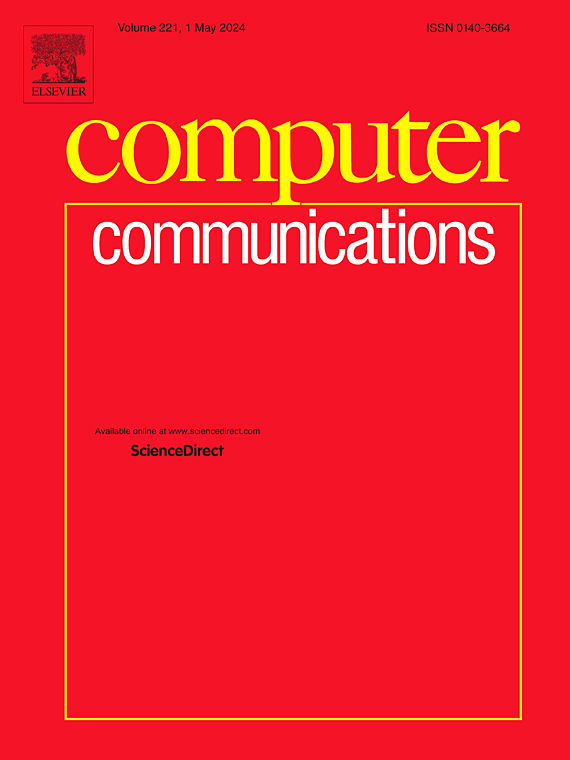介绍和评估SWI-FEED:为大规模环境设计的智能水物联网框架
IF 4.5
3区 计算机科学
Q1 COMPUTER SCIENCE, INFORMATION SYSTEMS
引用次数: 0
摘要
供水系统的数字化已成为现代社会的一个重要目标。在城市化、消费者需求波动和资源有限的推动下,当代wds日益复杂,使其管理尤其具有挑战性,特别是在大规模场景下。本文提出了wi - feed框架,旨在促进物联网(IoT)的广泛部署,以增强wds的监控和优化。该框架旨在研究在不同环境下大规模物联网在监测和优化wds中的应用,特别关注四种用例,如最优节点激活、物联网网关部署、分布式泄漏检测和水需求分解。wi - feed已经在Open Water Analytics社区公共存储库中使用预定义的网络模型进行了测试。具体来说,这四个用例使用一个由4,419个传感器节点、3个储罐和5,066个管道组成的大型网络进行评估。总的来说,这个全面的框架提供了一个整体的方法来解决WDS可能面临的挑战,并优化大规模物联网部署的效率。它降低了WDS内物联网设备的能耗,同时增强了现实水网络中的泄漏检测和定位能力。我们采用的理论方法是基于图论,它允许物联网网关的战略定位,以最大化网络覆盖和最小化基础设施冗余。这可以显著减少所需网关的数量,从而降低整个系统的能耗。本文章由计算机程序翻译,如有差异,请以英文原文为准。
Introducing and evaluating SWI-FEED: A smart water IoT framework designed for large-scale contexts
The digitalization of Water Distribution Systems (WDSs) is becoming a key objective in modern society. The increasing complexity of contemporary WDSs, driven by urbanization, fluctuating consumer demand, and limited resources, makes their management particularly challenging, especially in large-scale scenarios. This paper proposes the SWI-FEED framework designed to facilitate the widespread deployment of the Internet of Things (IoT) for enhanced monitoring and optimization of WDSs. The framework aims to investigate the utilization of massive IoT in monitoring and optimizing WDSs in different contexts, with a particular focus on four use cases such as optimal node activation, IoT gateways deployment, distributed leakage detection and water demand disaggregation. SWI-FEED has been tested with predefined network models available in the Open Water Analytics community public repository. Specifically, the four use cases are evaluated using a large network consisting of 4,419 sensor nodes, 3 tanks and 5,066 pipes. Overall, this comprehensive framework provides a holistic approach to address possible challenges of a WDS and optimize the efficiency of large-scale IoT deployments. It reduces the energy consumption of IoT devices within the WDS while enhancing leak detection and localization capabilities in real-world water networks. Our adopted theoretical methodology is based on graph theory, which allows IoT gateways to be strategically positioned to maximize network coverage and minimize infrastructure redundancy. This makes it possible to significantly reduce the number of gateways required and, consequently, the overall system energy consumption.
求助全文
通过发布文献求助,成功后即可免费获取论文全文。
去求助
来源期刊

Computer Communications
工程技术-电信学
CiteScore
14.10
自引率
5.00%
发文量
397
审稿时长
66 days
期刊介绍:
Computer and Communications networks are key infrastructures of the information society with high socio-economic value as they contribute to the correct operations of many critical services (from healthcare to finance and transportation). Internet is the core of today''s computer-communication infrastructures. This has transformed the Internet, from a robust network for data transfer between computers, to a global, content-rich, communication and information system where contents are increasingly generated by the users, and distributed according to human social relations. Next-generation network technologies, architectures and protocols are therefore required to overcome the limitations of the legacy Internet and add new capabilities and services. The future Internet should be ubiquitous, secure, resilient, and closer to human communication paradigms.
Computer Communications is a peer-reviewed international journal that publishes high-quality scientific articles (both theory and practice) and survey papers covering all aspects of future computer communication networks (on all layers, except the physical layer), with a special attention to the evolution of the Internet architecture, protocols, services, and applications.
 求助内容:
求助内容: 应助结果提醒方式:
应助结果提醒方式:


